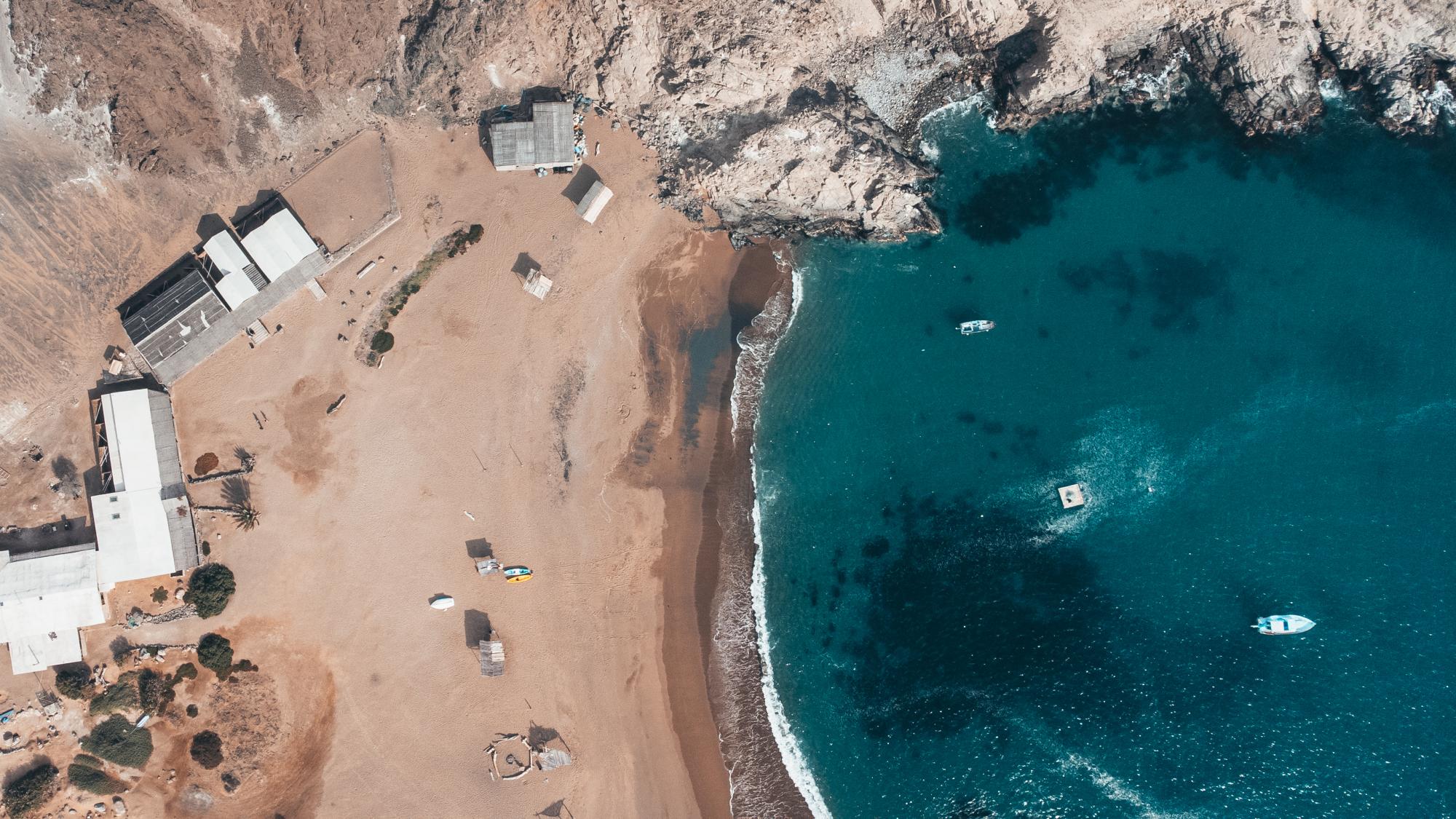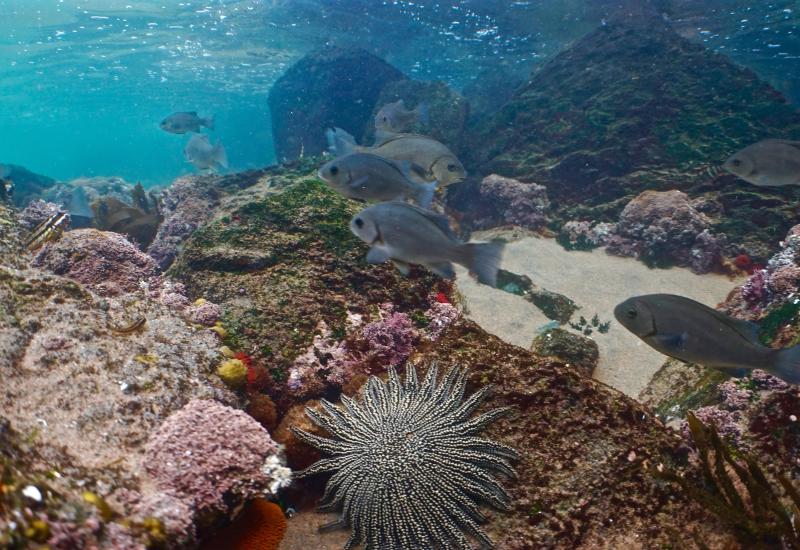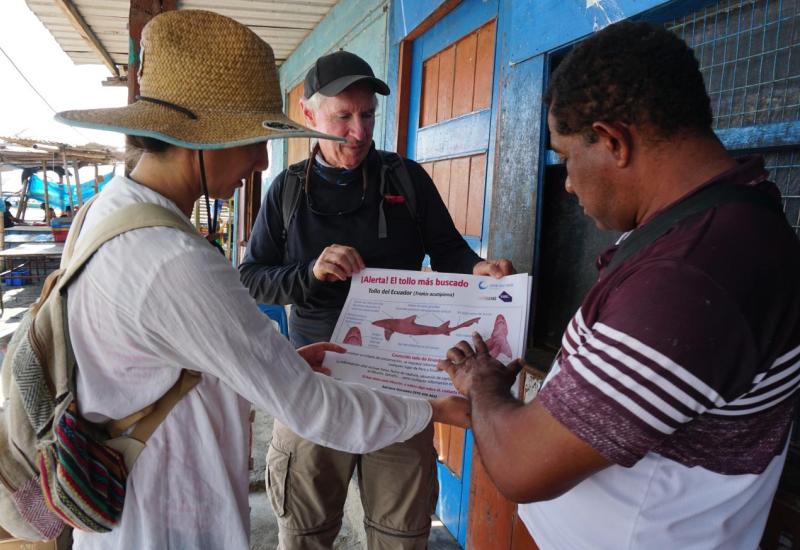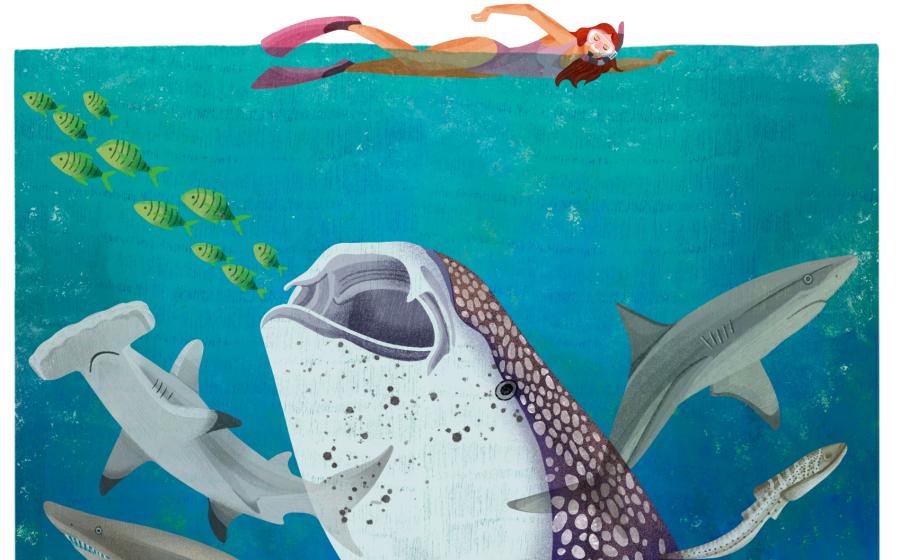Diving in Peru: Exploring the Final Frontier
By the time my group made it to Caleta San Jose, we were tired and ravenously hungry. The eco lodge, located on the southern coast of Peru’s Arequipa region, is tucked in a hidden cove between folds of the coastline’s cliffs.
We started our journey that morning in the verdant Majes Valley, and after stops to admire the petroglyphs of Toro Muerto and the views from the country road, we ended up on the coast with no phone service. From there, we proceeded to get terribly lost.
Once we swung off the paved road, we came across a knot of 4x4 tracks etched into the sand. For the next hour we kicked up dust, trying one bumpy track after another, each of which led to a dead end at the edge of giant brown cliffs. When our guides, who were also our drivers, stopped to confer in rapidfire Spanish and wild gestures, inside the cars someone hungrily opened a case of beer, convinced it was the closest thing to lunch we might get since our breakfast at 8:30am.
It was 3:45pm when we finally reached the unmarked entrance to Caleta San Jose. As we walked down the steep gravel path, our guides slowly maneuvered their cars into the cavity.
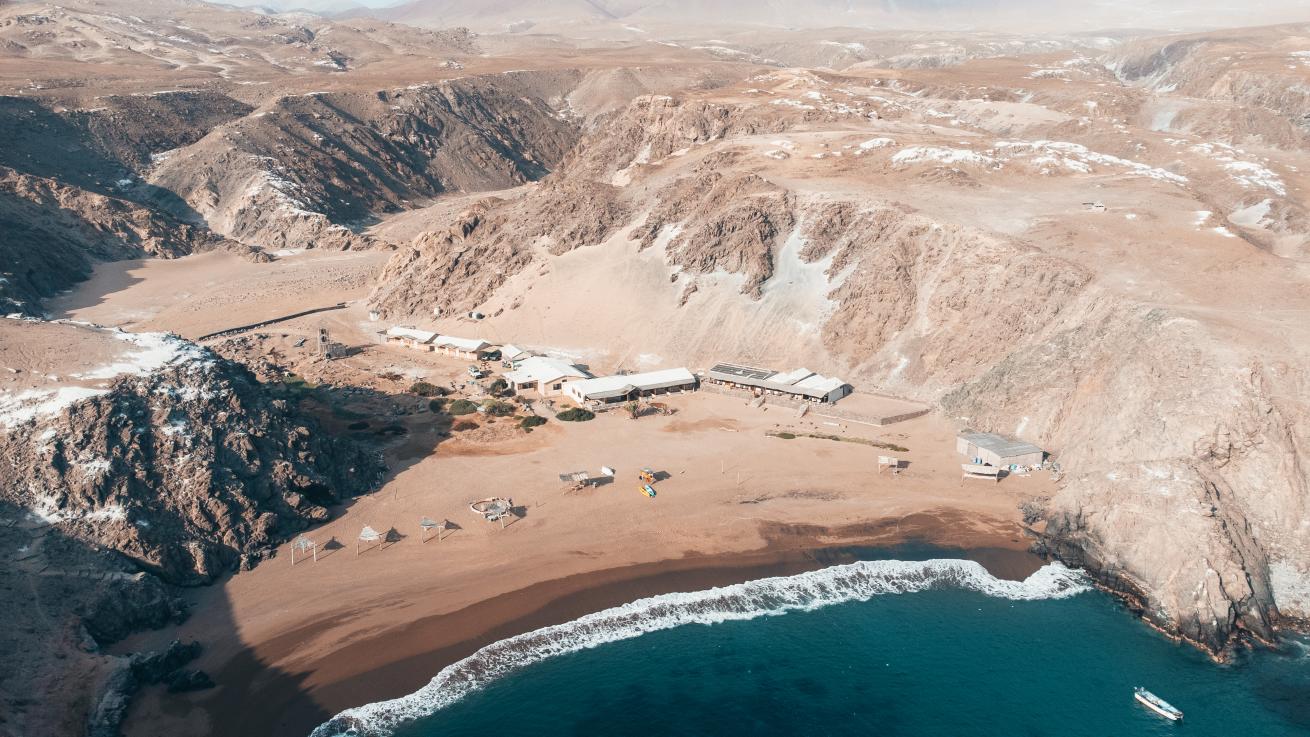
ATTA/Daniel RodriguezCaleta San Jose eco lodge and private cove.
Arriving at the End of the Earth
Maybe I was delirious from hunger, but walking onto the beach of Caleta San Jose, I had the sense I was not quite on Earth, as if this were the last stop before the express route to outer space. Craggy moon-like rocks formed a crater on three sides, giving way to cliffs that framed the Pacific Ocean. When I ran to the surf to stick my toes in, an icy chill rose up my legs.
The cove was quiet and still except for dark blue waves that lumbered to shore, and the only signs of human life were two small boats bobbing up and down in the water and the lodge, a low-slung wooden structure behind a stone wall on the beach.
High on the day’s rugged adventure and its otherworldly conclusion, we all chatted excitedly as we walked barefoot on the sandy beach. To distract us while our late afternoon lunch was being prepared, the guides listed all the possible activities for the next day. “Kayaking, visiting sea otters, hiking,” all great options I thought, “scuba diving…” and my ears suddenly perked up, but I cursed myself for leaving my logbook at home, wrongly assuming Peru wasn’t a scuba destination. What would diving be like in this place that felt like another planet? I had to find out.
Related Reading: 4 Best Scuba Diving Destinations in Peru
Lunch, served at 4:30pm, was heavenly: ceviche made from the catch of the day, sprinkled with peanuts and paired with soft yams, followed by a seafood risotto. Our screaming stomachs finally quieted, we settled into one of the sweetest nights I have ever had while traveling.
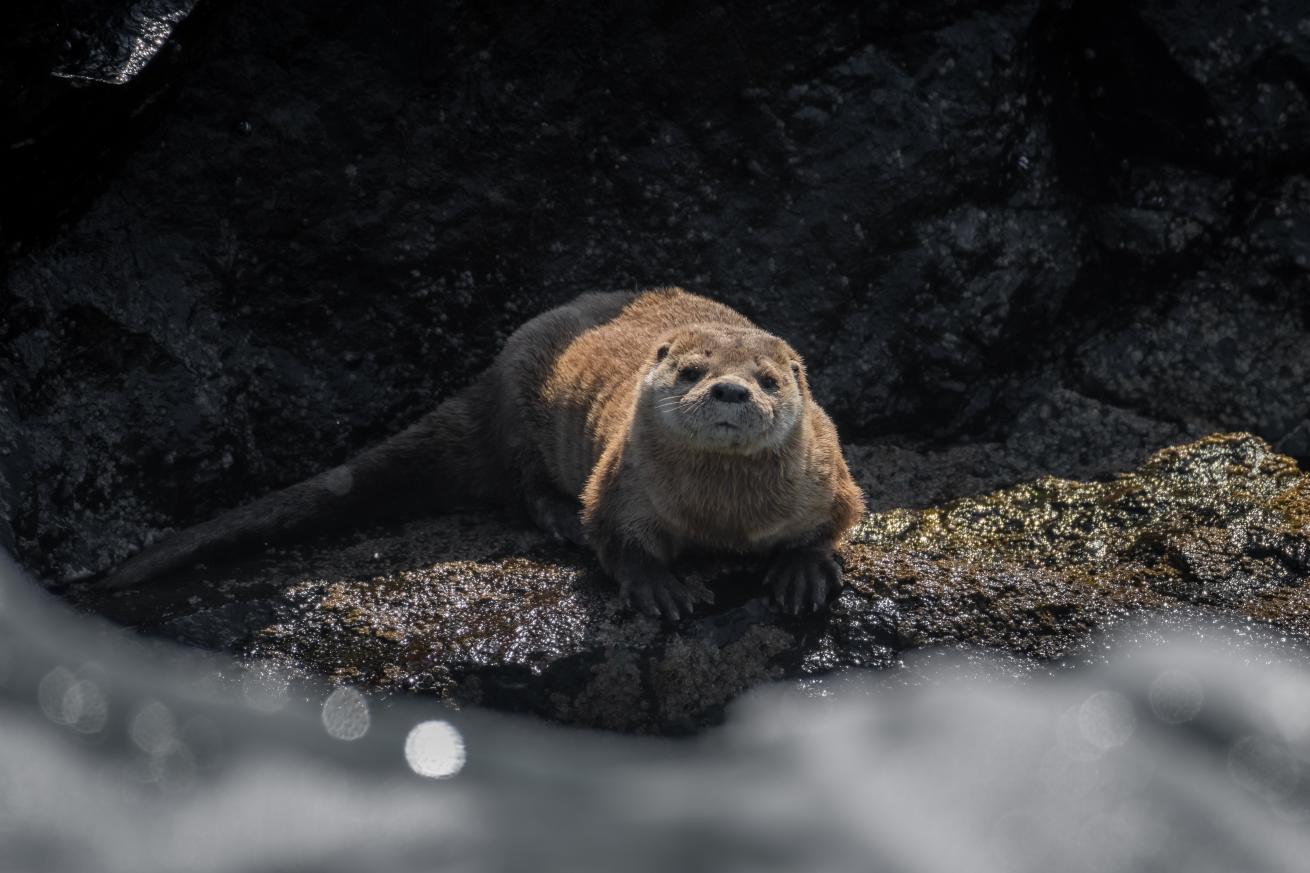
Sea otter that hangs out near Caleta San Jose.
It was the last evening of a six-day road trip through the Arequipa region, and during that time we had built the kind of friendships that only travelers form while on the road together—stronger than most other connections, and yet only a few days old.
In just six days, we had hiked at 16,000 feet, biked through the Colca Canyon, stayed in remote towns and driven down bumpy, winding roads cut into great stone mountains. Tomorrow evening we would have to switch back into work mode to attend an adventure travel conference in the city of Arequipa, so this felt like the last day of summer vacation—everyone was in a good mood, everyone enjoyed a pisco sour…or two.
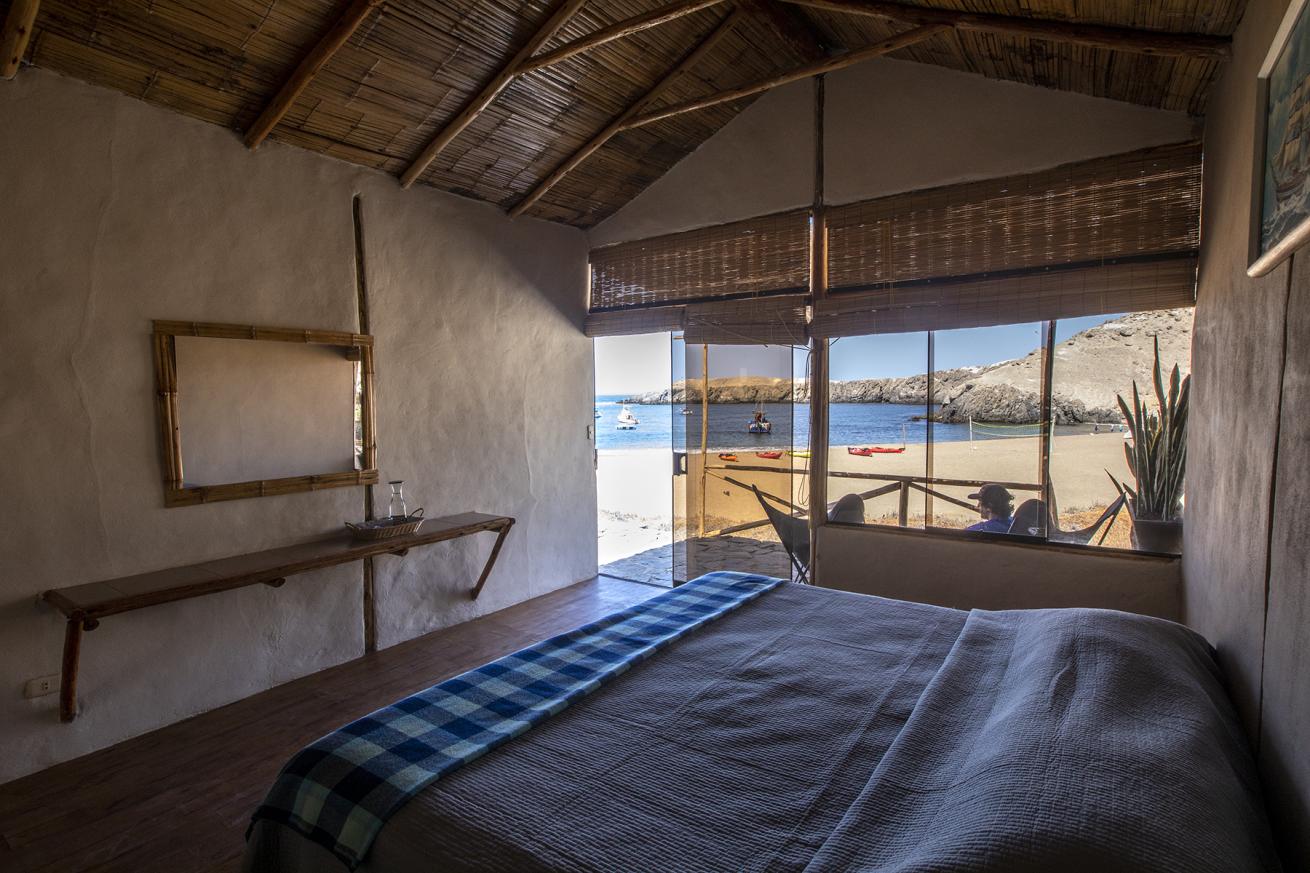
A Blissful Evening in a Private Cove
As the striated clouds swallowed the setting sun, most of the group gathered on a low ledge of the cliff that framed the shore. Yonny and Gorky, the two dive masters who run Peru’s southernmost PADI center, Diving Ccanto Group, had collected sea urchins during their afternoon dive in the bay and cracked them open for everyone to try.
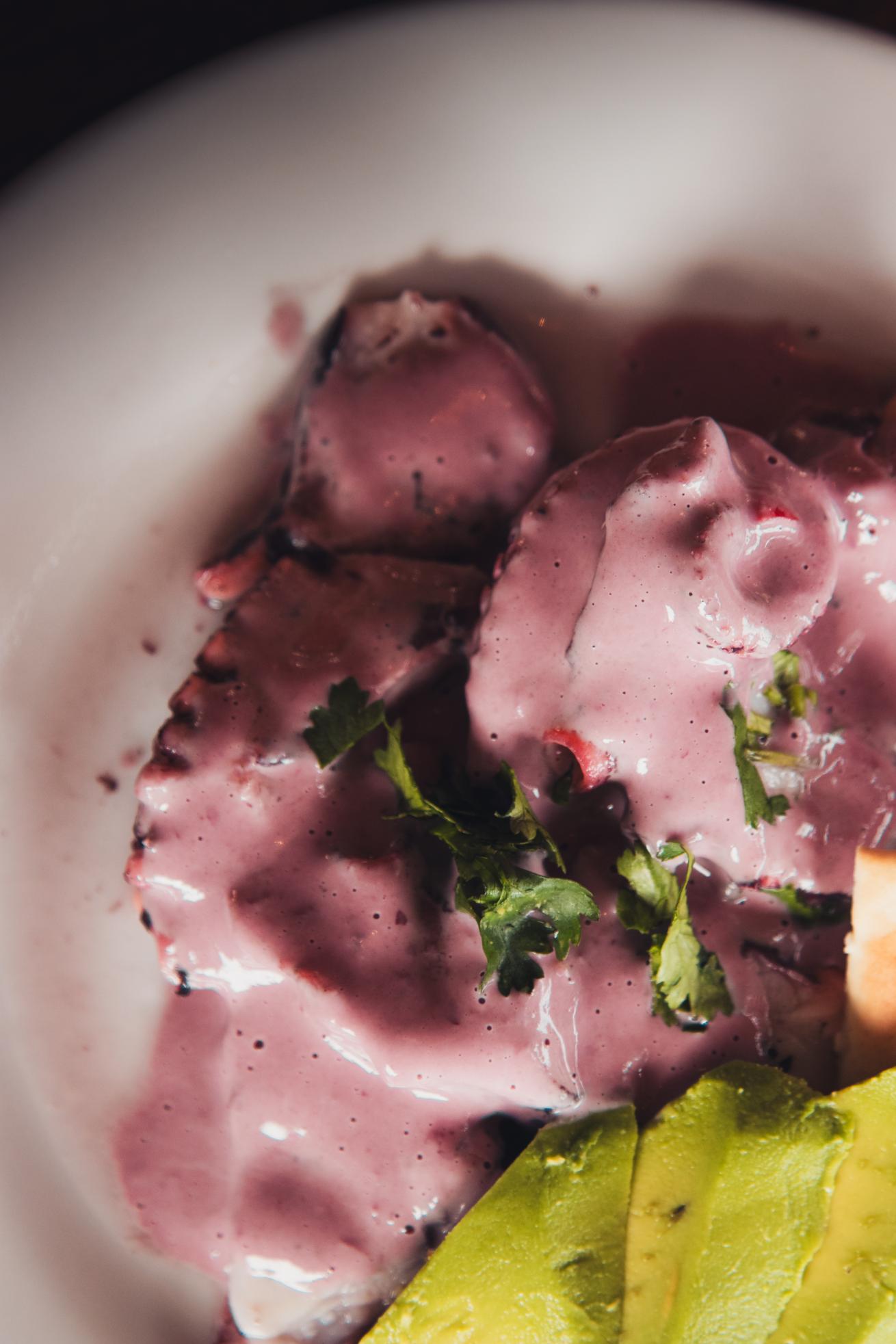
Fresh catch of the day served at Caleta San Jose.
I wandered over, drawn to the scene by the laughter that echoed off the rocks. As I came closer, someone called out “Zanny, try this!” and handed me an orange slice of sea urchin. It was sweet and fresh, the texture of custard, and oozed salty ocean water. I polished it off with a glass of white wine, and I don’t know if I’ve ever tasted anything so delicious.
At some point that evening, it was decided that two of us—the only two certified divers in the group—would go diving the next morning with Yonny and Gorky. In a mix of basic English and Spanish, we laid out our plans for the dive, before Yonny eyed my wine glass and gave us each a very stern look: “No drinking tonight.” We laughed.
While I will admit I had more than that one glass of wine, I did mostly take it easy. After sitting around the campfire for a while, I returned to my room to get some much-needed rest. Sleep did not come easy unfortunately, as I was worried about the next day’s dive—I shiver wearing two full wetsuits in the tropics, so how would I fare in 64-degree water? But when I woke up to the sun streaming through my window and walked out onto the sandy shore, I felt game for just about anything.
Gearing Up for the Cold
Even though I felt up for adventure, I requested the warmest wetsuit possible. It had to be greased up with soapy water to squeeze me in, and I held my breath as Yonny yanked the top over my head, enveloping me in slippery darkness.
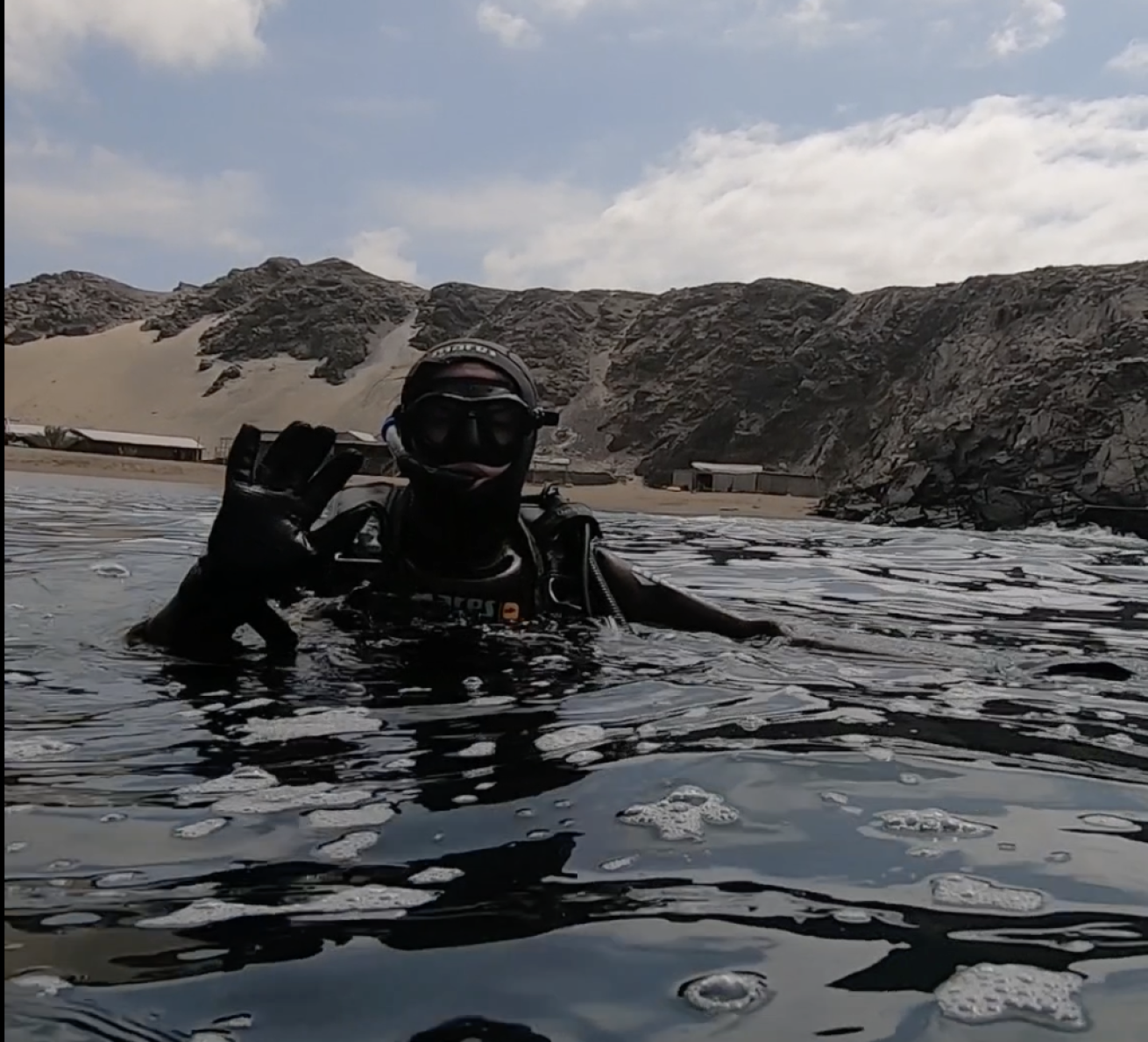
Courtesy, Diving Ccanto GroupThe author ready for her dive in Caleta San Jose.
When our dive masters informed us that we would snorkel and “get used to the water” before diving, I almost rolled my eyes at their precaution. A few minutes later, though, I realized why this was necessary—I almost panicked as icy water surged around my exposed skin, so cold it burned.
Though I floated like foam at the top of a cappuccino in my thick wetsuit, I kicked around as best I could to let my body get used to the motion of the waves, the chill of the water and the cloudy underwater world.
After exploring the cove from the water’s surface, it was finally time to go deeper. We returned to shore to strap on our scuba gear and split into buddies—each of us with a divemaster. I was paired with Gorky, whose friendly face and calm aura put me at ease, despite the fact that he knew little English and I spoke little Spanish.
Related Reading: Peru's Most Important Artificial Reef Is Threatened to Be Destroyed
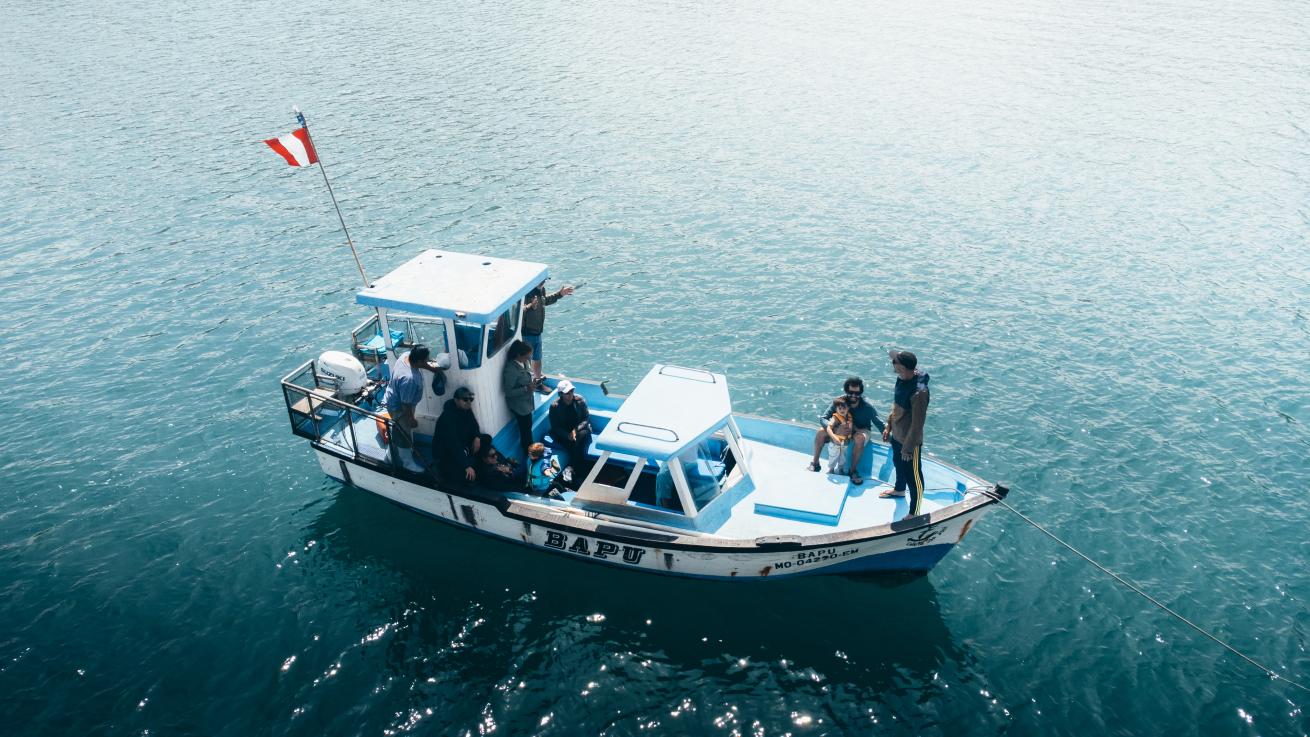
Dive boat taking visitors on an excursion from the hidden cove.
Into the Depths
Soon came that familiar sensation of deflating my BCD and plunging into the water—what feels to me like coming home. At least that’s what it normally feels like. This time, my heart raced as I felt overwhelmed by the cold water, poor visibility and the discomfort that comes with diving for the first time in over a year.
I stayed close to Gorky as we reached the sandy bottom some 16 feet down, trying to slow my breathing and get my bearings.
An underwater scene in Caleta San Jose’s private bay.
The water was almost milky and the waves rocked us as we moved, but the underwater world was as fascinating as ever. We swam through thick ribbons of kelp, glimpsing purple crabs walking sideways along the ocean floor and little fish darting between speckled rocks. To avoid being swept by the currents, we stuck our fingers into the sand as we went. At one point this motion scared a flounder, who raised its eyes and dashed away.
Gorky came across a sea urchin, and threw it at some rocks a few times until it cracked open. He dug out the orange flesh and handed it to me. Ready to list “eating underwater” as one of my talents, I took a breath in, removed my regulator with one hand, pushed the sea urchin into my mouth with the other, and swallowed it, along with a hefty dose of ocean water.
I replaced the regulator in my mouth, purged it, and swallowed rapidly to flush away the burn of salt. When he offered me another piece, I shook my head. Once for the bragging rights was enough!
Eventually the cold made my skin numb so I signaled to Gorky in the shared underwater language that we both spoke fluently. It was time to surface. My exit from the water was anything but graceful—the waves took me to shore prematurely and I lay on the sand flailing under the heavy scuba gear—but finally I got back on my feet, triumphant. I was elated–the way I always feel at the end of a dive.
That elation is similar to the awe-struck feeling I get as a visitor exploring someone else’s country, except when diving, it’s more like being a visitor in someone else’s world. Here in this remote, hidden inlet, I felt like I had been a visitor in a whole other galaxy.
After Yonny helped pry off my wetsuit—another less-than-graceful process—it was time to warm up with hot coffee, leave the lodge and head up the rocky slope back toward Earth.

